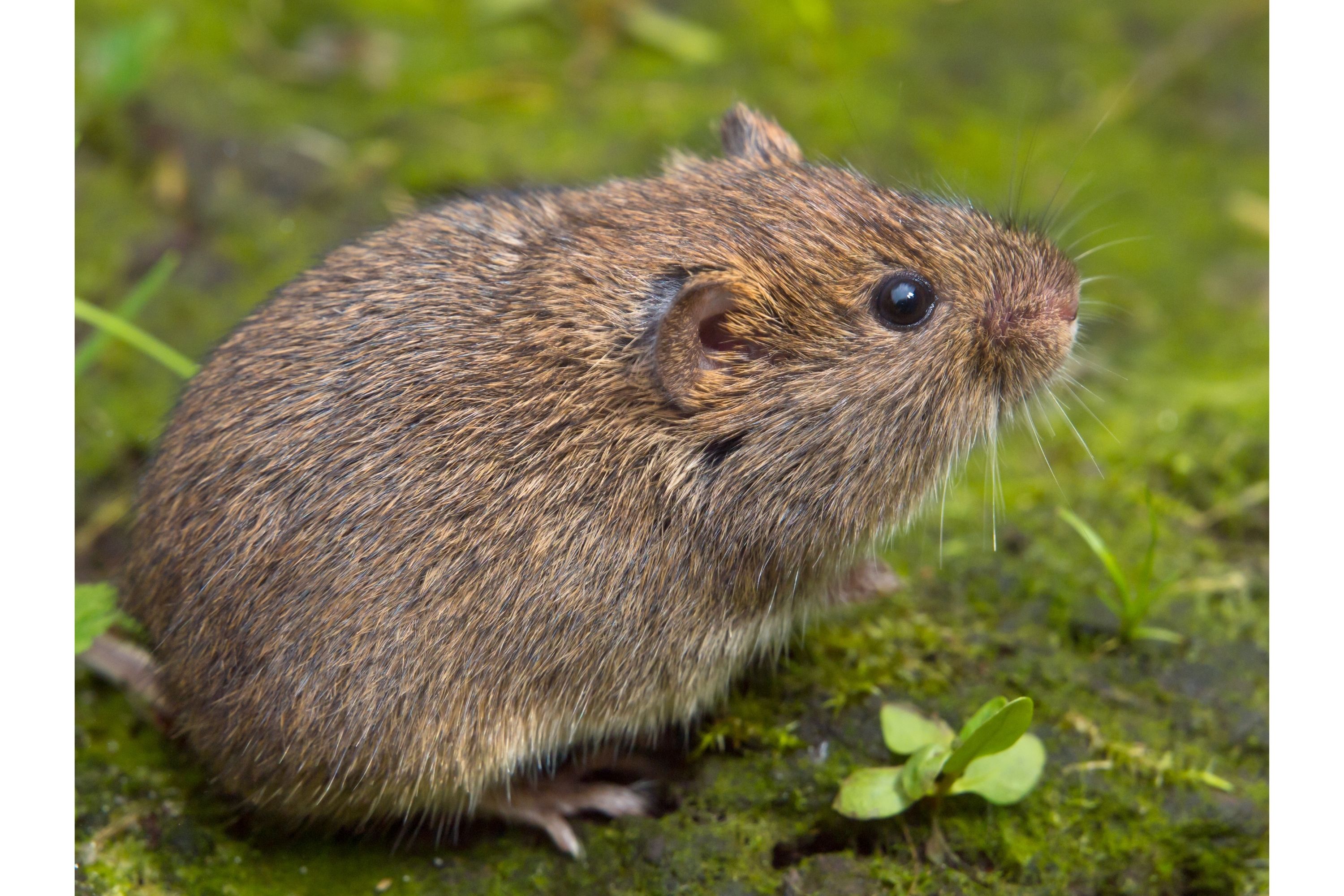Short-tailed field vole
(Microtus agrestis)

Description
The short-tailed field vole, short-tailed vole, or simply field vole (Microtus agrestis)is a grey-brown vole, around 10 cm in length, with a short tail. It is one of the most common mammals in Europe, with a range extending from the Atlantic coast to Lake Baikal. These voles are found in moist grassy habitats, such as woodland, marsh or on river banks. Although they make shallow burrows, they usually build nests above ground. They are an important food source for owls and some other predators and their population size tends to peak and trough cyclically. Field voles breed prolifically, mainly in summer, but often all year round, even under snow. Females produce up to seven litters a year, each averaging from four to six young which are weaned after about fourteen days. The short-tailed field vole has a palearctic distribution. Its range extends throughout Western Europe and eastwards to Lake Baikal in Siberia and north west China and northward to Norway, Sweden and Finland. It is absent from Iceland and Ireland and thins out southwards towards the Mediterranean Sea. It is found in a range of habitats including meadows, field borders, plantations, woodland verges, clearings, upland heaths, dunes, marshes, bogs and river banks and tends to prefer wet areas. It is found at altitudes of up to about 1,700 metres (5,600 ft) The short-tailed field vole is more active by day than the common vole. It excavates shallow burrows close to the surface of the ground, under leaf litter and under snow in winter. It also makes surface runs through tall vegetation, routes along which it can scurry back to safety if danger threatens. Off these are dedicated defecation sites and it often leaves little piles of chopped up grass stalks nearby. The short-tailed field vole is a herbivore and feeds on grasses, herbs, root tubers, moss and other vegetation and gnaws bark during the winter (it does not hibernate). It occasionally eats invertebrates such as insect larvae. Among the plants it favours are the grasses Agrostis spp. and Festuca rubra, the yarrow (Achillea millefolium), clover (Trifolium spp.), dandelion (Taraxacum officinale) and buttercups (Ranunculus spp.). The voles choose species with high digestibility where possible and avoid some common plants amongst which they live such as the tufted hairgrass (Deschampsia cespitosa) and rosebay willowherb (Chamerion angustifolium).
Taxonomic tree:







